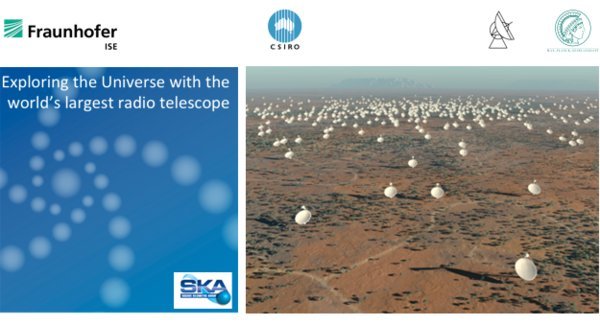
Renewable Energy Concepts for mega-Science Projects demonstrated at the SKA and its Pathfinders
Background
In order to explore the boundaries of our current knowledge, many new scientific experiments and facilities naturally require a large technical infrastructure. As a result, these mega-Science projects also often have a large power consumption that is not only costly but may also be sustainable on environmental grounds. In order to enable mega-Science projects also in the future and to reduce both their long-term financial and environmental costs, renewable energy solutions should be employed. This workshop will explore the challenges, possibilities and opportunities using the example of the Square Kilometre Array (SKA), a global science projects that will result in the largest telescope on Earth: a radio telescope with a collecting area of about 1 square kilometre. Built as an innovative, next generation telescope that will replace conventional steel with a massive increase in software and computing, the power requirements of the SKA are challenging. Given that it will be built in a remote area and requiring largely constant 24/7 demand, power supply will be a major factor in the design and operation of the telescope.
The workshop was attended by partners from industry and science, discussing the challenges but also the opportunities given by this mega-Science project. The goal was to outline the path to a complete renewable energy solution, using SKA pathfinder instruments as demonstrators for this concept of “green science” which will ultimately also benefits non-scientific applications that demand stand-alone power solutions, including remote communities and industries.
The workshop set the scene for signing a Memorandum of Understanding between Fraunhofer ISE, CSIRO and ISE for furthering scientific collaboration.